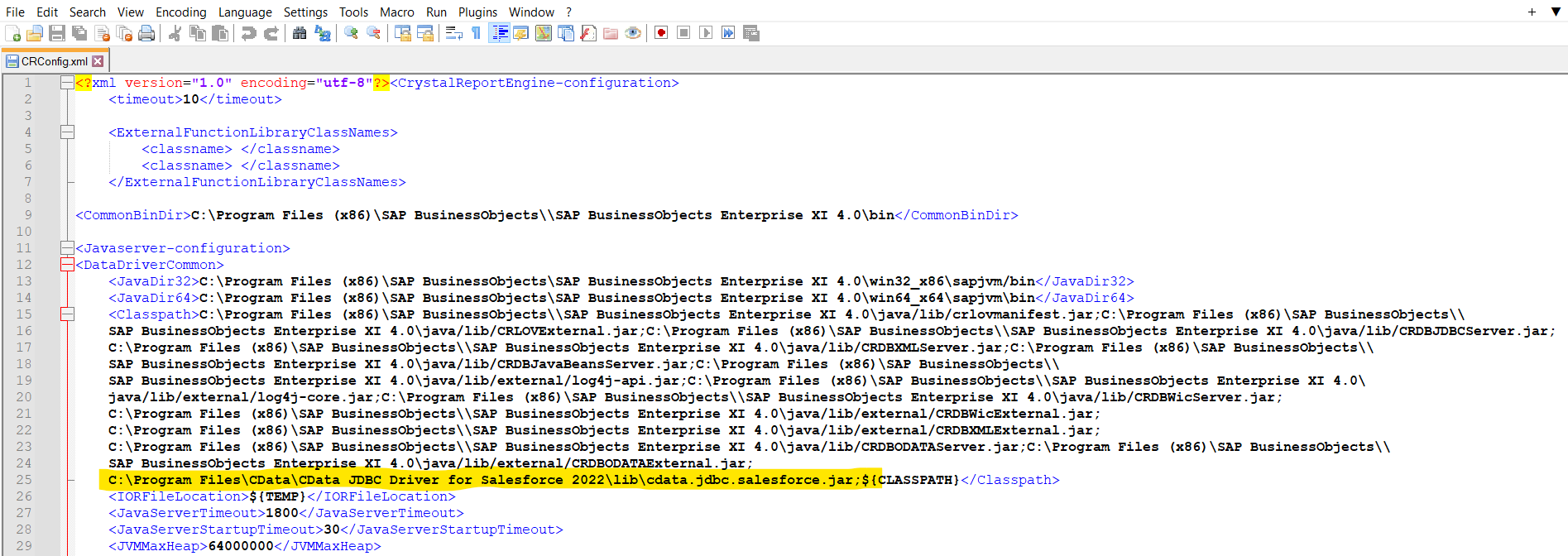
Crystal Reports has many options for offloading data processing to remote data; this enables real-time reporting. With the support for JDBC in Crystal Reports, the CData JDBC Driver for SQL Server brings this capability to Crystal Reports. This article shows how to create a report on SQL Server data that refreshes when you run the report.
Refer to the given table for the tools and their versions used in this article:
| Application Name | Version |
|---|---|
| SAP Crystal Reports 2020 | SP3 |
| JDBC Driver | 23.0.8565 |
Install the CData JDBC Driver for SQL Server by including the driver JAR in the Crystal Reports classpath: Add the full file path, including the .jar, to the paths in the ClassPath element under the DataDriverCommonElement.
The default location for the CRConfig.xml file is C:\Program Files (x86)\SAP BusinessObjects\SAP BusinessObjects Enterprise XI 4.0\java — the path might be slightly different based on your installation. The driver JAR is located in the lib subfolder of the installation directory.

After you have added the JAR to the ClassPath, restart Crystal Reports.
After deploying the JDBC Driver for SQL Server, you can use the Report Wizard to add SQL Server data to a new report.
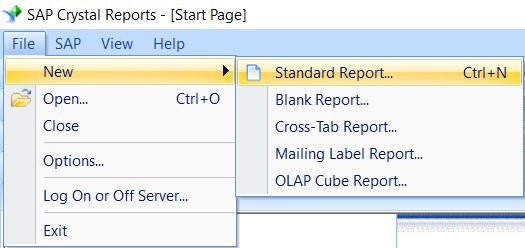
For assistance constructing the JDBC URL, use the connection string designer built into the SQL Server JDBC Driver. Double-click the JAR file or execute the jar file from the command line.
java -jar cdata.jdbc.sql.jar
You can authenticate to Azure SQL Server or Azure Data Warehouse by setting the following connection properties:
 Using the built-in connection string designer to generate a JDBC URL (Salesforce is shown.)" />When configuring the JDBC URL, you may also want to set the Max Rows connection property. This will limit the number of rows returned, which is especially helpful for improving performance when designing reports and visualizations.
Using the built-in connection string designer to generate a JDBC URL (Salesforce is shown.)" />When configuring the JDBC URL, you may also want to set the Max Rows connection property. This will limit the number of rows returned, which is especially helpful for improving performance when designing reports and visualizations.
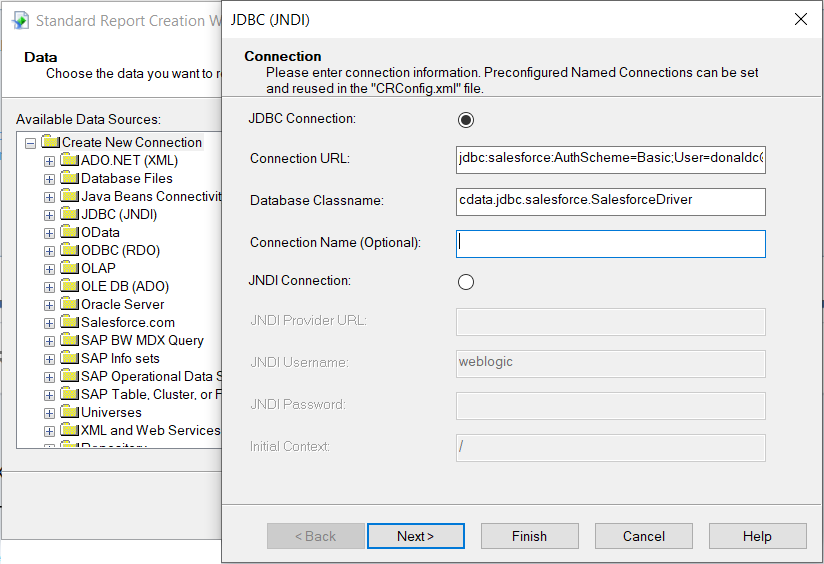
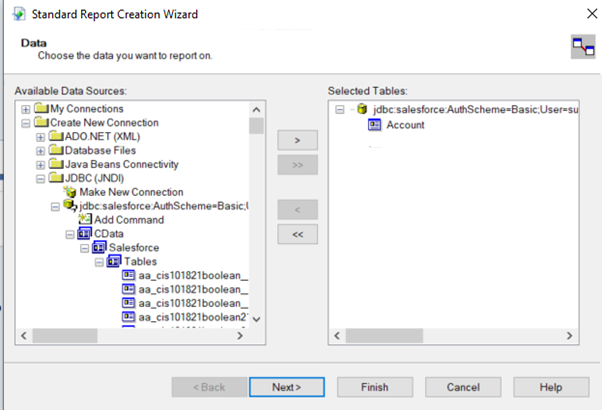
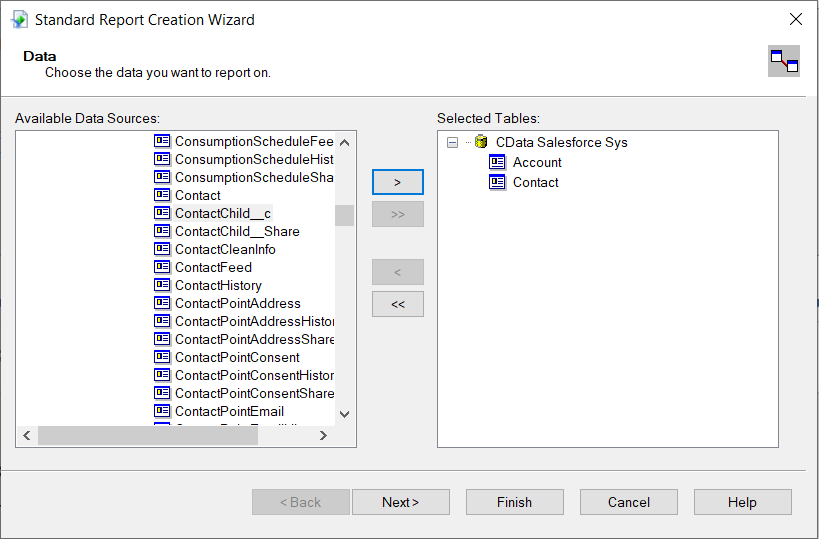
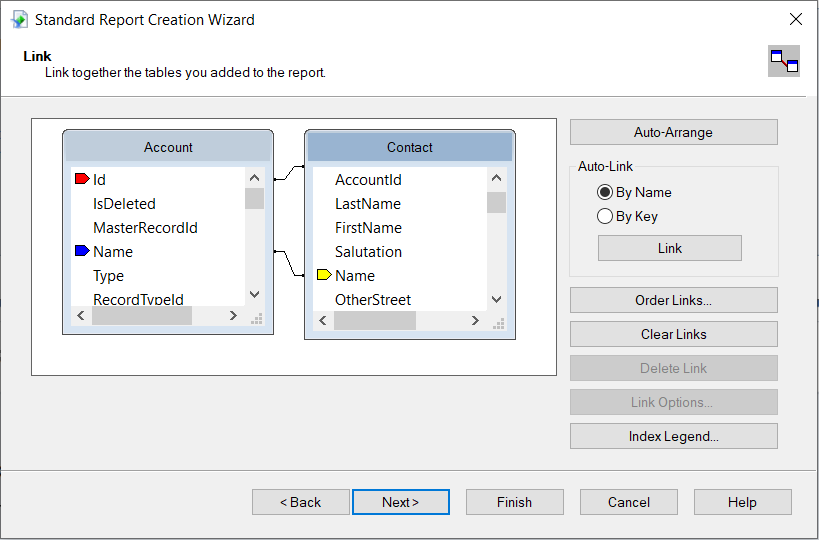
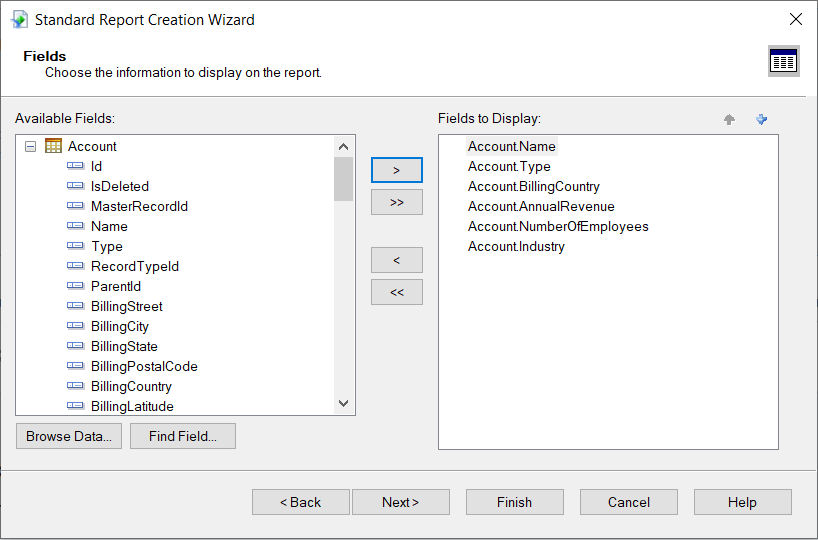
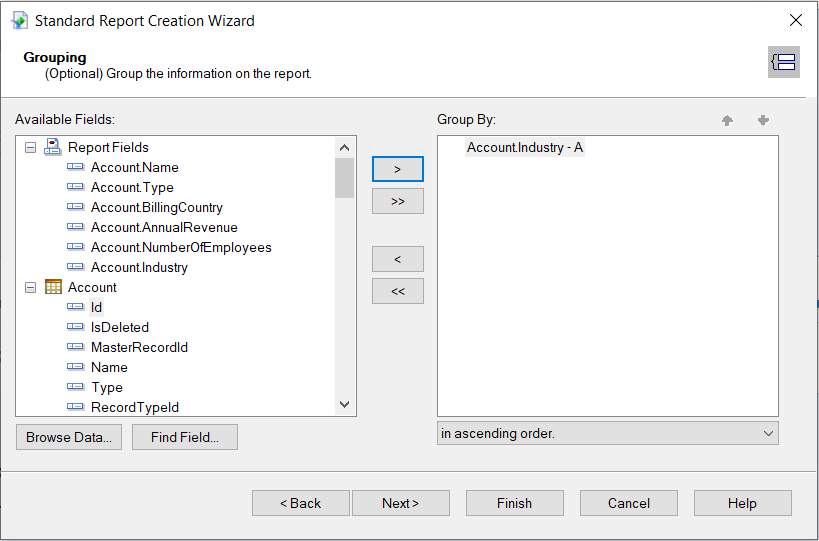
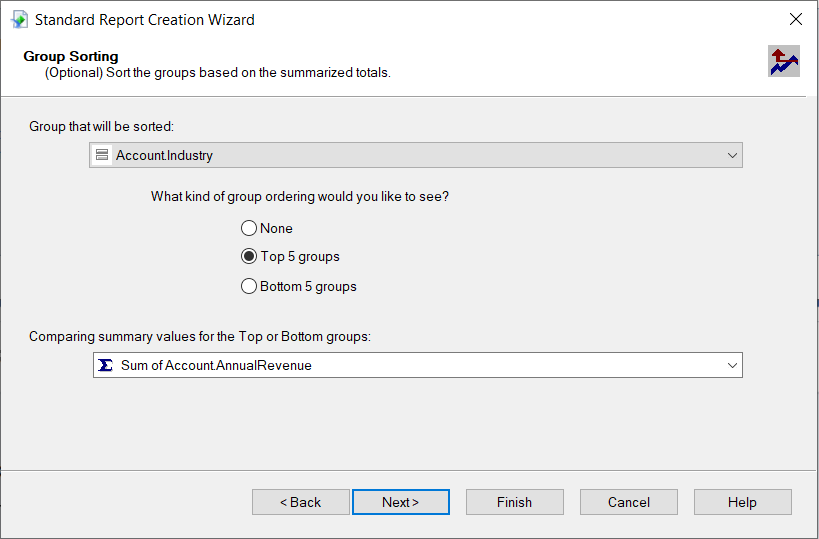
You can then configure grouping, sorting, and summaries. See the following section to use the aggregate and summary to create a chart.
After selecting a column to group by, the Standard Report Creation Wizard presents the option to create a chart. Follow the steps below to create a chart aggregating the ShipName column's values.
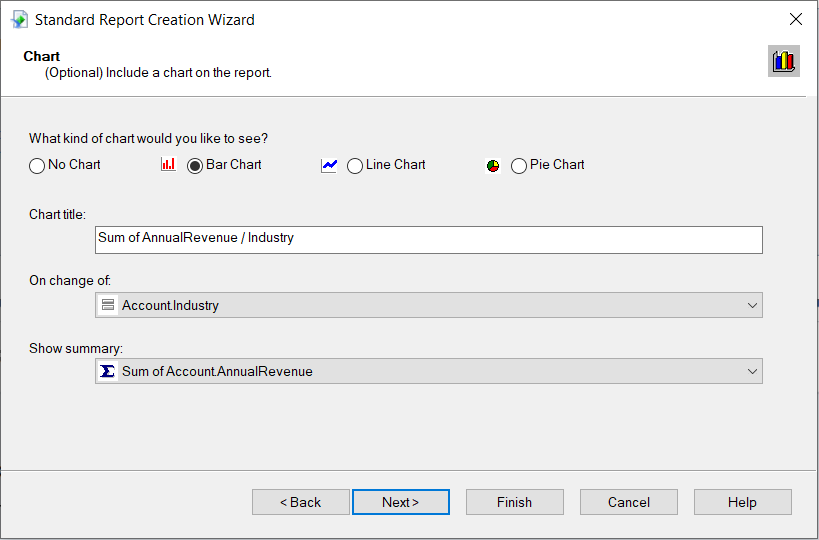
Select a template for the report to preview the finished report and view the chart populated with your data.
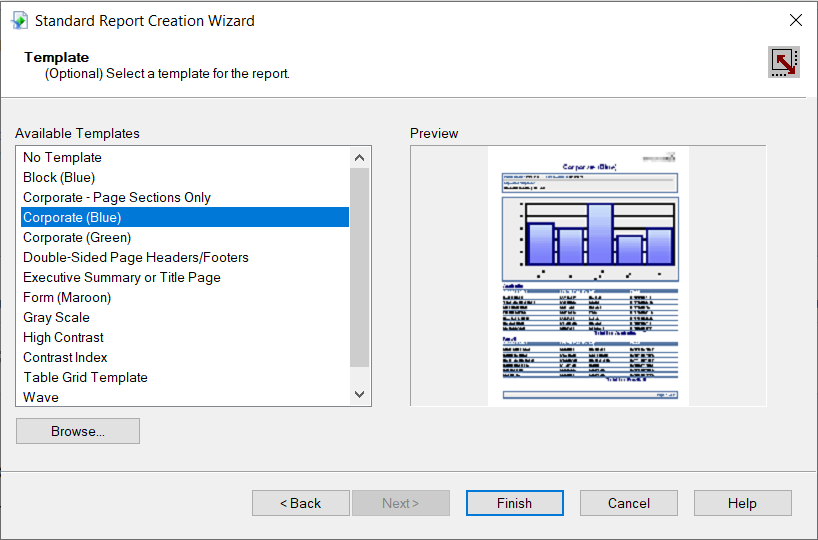
You can now see that the report contains all the fields initially specified.
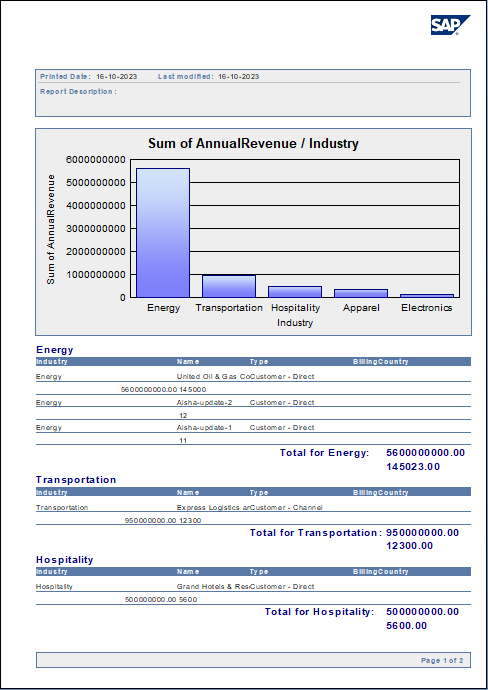
To ensure that you see updates to the data, click File and clear the "Save Data with Report" option. As you interact with the report, for example, drilling down to hidden details, Crystal Reports executes SQL queries to retrieve the data needed to display the report. To reload data you have already retrieved, refresh or rerun the report.
You can offload processing onto the driver by hiding details elements and enabling server-side grouping. To do this, you need to select a column to group by in the report creation wizard.
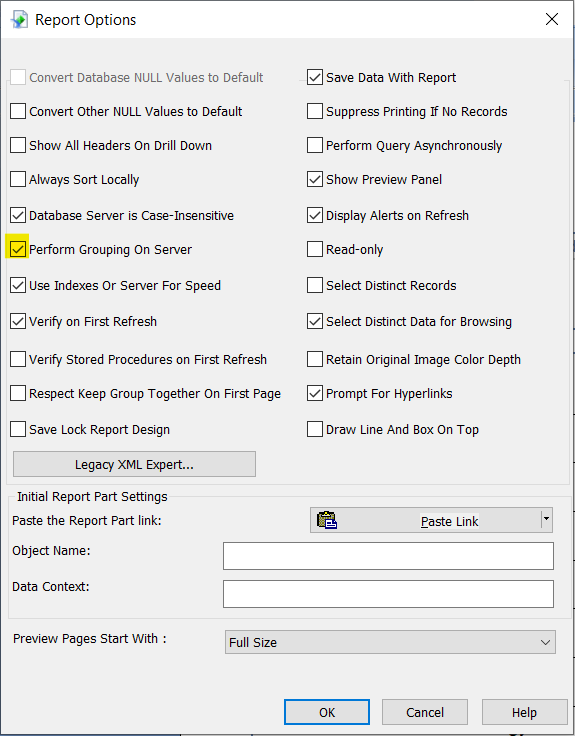
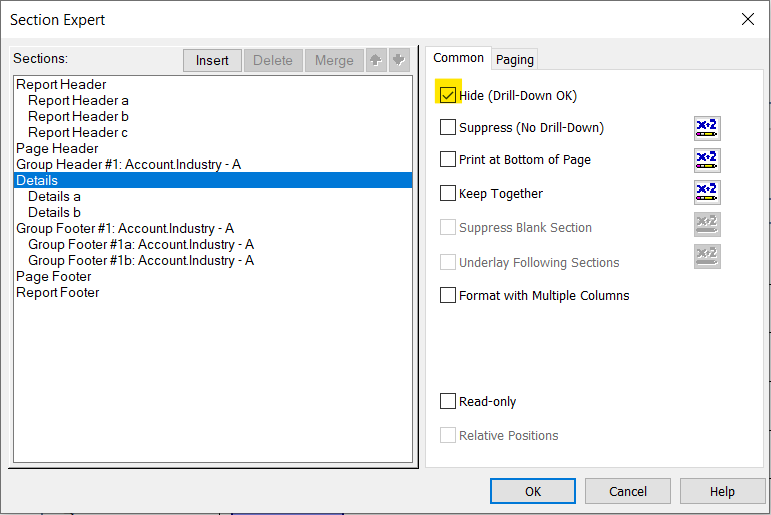
When you preview your report with the hidden details, Crystal Reports executes a GROUP BY query. When you double-click a column in the chart to drill down to details, Crystal Reports executes a SELECT WHERE query that decreases load times by retrieving only the data needed.
At this point, you have created a SAP Crystal report built on top of live SQL Server data using SAP Crystal Reports and a CData JDBC Driver. Learn more about the CData JDBC Driver for SQL Server and download a free trial from the SQL Server JDBC Driver page. Let our Support Team know if you have any questions.
CData Software is a leading provider of data access and connectivity solutions. Our standards-based connectors streamline data access and insulate customers from the complexities of integrating with on-premise or cloud databases, SaaS, APIs, NoSQL, and Big Data.